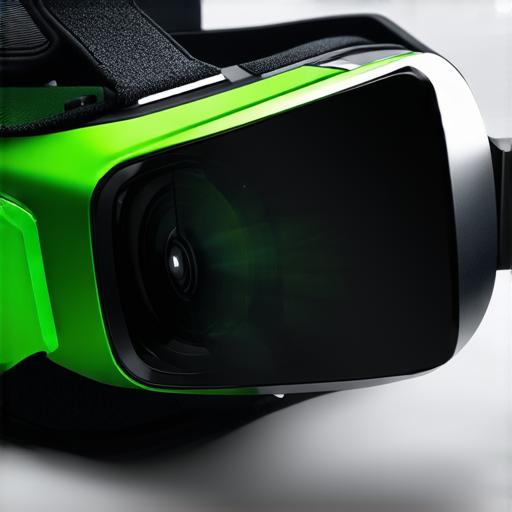<!DOCTYPE html>
The Growth of Virtual Reality Technology
Virtual reality (VR) is a burgeoning technology that has been gaining traction in recent years. It refers to a simulated environment where users can interact with computer-generated objects and experience immersive, three-dimensional environments. VR technology has the potential to revolutionize various industries, including gaming, education, healthcare, and more.
Virtual reality technology has come a long way since its inception. The first VR headset was developed in 1968 by Ivan Sutherland, but it wasn’t until the 2010s that VR began to gain widespread attention. This is due in part to advancements in hardware and software that have made VR more accessible and affordable for consumers.
In recent years, we have seen a rapid increase in the number of VR devices available on the market. According to Statista, the global VR market size was estimated at USD 39.9 billion in 2020 and is projected to reach USD 159.3 billion by 2027, growing at a CAGR of 38.9% during the forecast period.
One of the key drivers of VR’s growth is its ability to create highly immersive experiences that transport users into simulated environments. This has been particularly successful in the gaming industry, where VR has become an increasingly popular way for gamers to experience their favorite franchises.
Another factor contributing to the growth of VR technology is its potential applications in other industries. For example, VR has been used in education to create virtual field trips that allow students to explore historical sites or even go on space missions without leaving the classroom. In healthcare, VR has been used for therapy and rehabilitation, allowing patients to simulate real-life scenarios in a safe and controlled environment.
The Usage of Virtual Reality Technology
Virtual reality technology has a wide range of applications across various industries. One of the most well-known uses of VR is in gaming, where it has become an increasingly popular way for gamers to experience their favorite franchises. VR games often offer more immersive and interactive experiences than traditional console games, allowing users to fully engage with the game world.
Another industry that has embraced virtual reality technology is education. Virtual reality can be used to create highly engaging and interactive learning experiences that allow students to explore historical sites or even go on space missions without leaving the classroom. This has the potential to make learning more fun and engaging for students, leading to better retention of information and improved academic performance.
The Usage of Virtual Reality Technology

Virtual reality technology has a wide range of applications across various industries. One of the most well-known uses of VR is in gaming, where it has become an increasingly popular way for gamers to experience their favorite franchises. VR games often offer more immersive and interactive experiences than traditional console games, allowing users to fully engage with the game world.
Another industry that has embraced virtual reality technology is education. Virtual reality can be used to create highly engaging and interactive learning experiences that allow students to explore historical sites or even go on space missions without leaving the classroom. This has the potential to make learning more fun and engaging for students, leading to better retention of information and improved academic performance.
Case Studies and Personal Experiences
One of the most effective ways to understand virtual reality technology is through case studies and personal experiences. Let’s take a look at a few examples:
1. Virtual Field Trips in Education
A study conducted by the University of Maryland found that students who took a virtual field trip to the Smithsonian National Air and Space Museum performed better on subsequent tests than those who visited the museum in person. This is because the virtual tour allowed students to interact with exhibits and learn at their own pace, leading to a more engaging and effective learning experience.
2. VR Therapy for Phobias
A study published in the Journal of Behavior Therapy and Experimental Psychiatry found that exposure therapy using virtual reality was as effective as traditional exposure therapy for treating social anxiety disorder. This is because the virtual environment allowed patients to confront their fears in a controlled and safe setting, leading to better outcomes than traditional methods.
3. Virtual Reality in Real Estate
A study conducted by the National Association of Realtors found that 72% of real estate agents believe that virtual tours are more effective than traditional property tours. This is because virtual tours allow clients to explore properties in greater detail and at their own pace, leading to a more efficient and satisfying shopping experience.
FAQs
Q: What industries have adopted virtual reality technology?
Virtual reality technology has been adopted by various industries, including gaming, education, healthcare, real estate, architecture, and engineering.
Q: How does virtual reality technology work?
Virtual reality technology works by creating a simulated environment that users can interact with using specialized headsets or other devices.
Q: What are the benefits of using virtual reality technology?
Virtual reality technology offers several benefits, including highly immersive and interactive experiences, improved learning outcomes, and more efficient collaboration between teams.
Summary
Virtual reality technology is a rapidly growing field that has the potential to revolutionize various industries. From gaming to education, healthcare, and real estate, virtual reality has already shown its effectiveness in creating engaging and immersive experiences for users. As the technology continues to advance and become more accessible, we can expect to see even more innovative applications in the years to come.
In conclusion, understanding the growth and usage of virtual reality technology is crucial for those who want to stay ahead of the curve in their respective industries. Virtual reality has already proven to be an effective tool for enhancing learning outcomes, treating phobias, and improving the real estate shopping experience. As the technology continues to evolve, we can expect even more exciting developments and applications in the future.
